Improving adapter efficiency using LVFR output rectifiers
Low forward voltage drop reduces the forward conduction energy loss and translates into a more efficient power conversion
BY KEVIN KELLER
ON Semiconductor, Phoenix, AZ
http://www.onsemi.com
Economically meeting efficiency specifications for ac/dc converters can be challenging. However, using the low VF rectifier (LVFR) technology, power supply efficiency can be improved without changing the circuit design or adjusting the board layout. Unlike simple performance tradeoffs or die size changes, this new LVFR trench based Schottky technology improves the forward voltage of the rectifier without negatively impacting the device leakage current, robustness, switching performance or breakdown voltage. In fact, LVFR rectifiers have faster switching times, better temperature stability, and higher avalanche energy capabilities than typical Schottky rectifiers at the same voltage and current rating. Most importantly, low forward voltage drop reduces the forward conduction energy loss (see Fig. 1 ). This better performance translates into a more efficient power conversion.
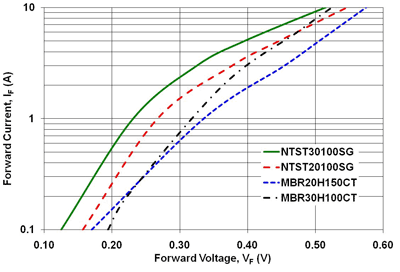
Fig. 1. Forward voltage comparison (typical data, measured at 125C – measured for both diode legs in parallel on dual devices)
Challenges in output rectification
Power supplies using secondary side output rectification, including most low cost flyback circuits, notebook adapters, and some ATX power supplies, suffer significant power losses in the output rectifier. These losses are commonly dominated by the forward voltage drop of the rectifier during the conducting portion of the operating cycle. This power loss can be reduced by using synchronous MOSFETs on the secondary side, but only at significantly increased system cost and complexity. Similarly, higher current output rectifiers can be used, but the circuit will suffer from additional switching and leakage losses, and again the system cost will increase. Using advanced trench technology, LVFR devices offer reduced forward voltage drop without sacrificing other performance parameters. The 5-A, 125C forward voltage of the NTST30100SG is 390 mV, well under the 450 mV typical for the MBR30H100CT, a traditional 30-A, 100-V planar Schottky, under the same test conditions.
This performance improvement can increase the overall system efficiency without changing the topology or the control circuitry. Using low forward voltage trench based rectifiers will increase system efficiency, without impact to the stability or noise level of the system.
Measured power supply efficiency improvements
Using the new LVFR devices in the NCP1380EVB reference circuit (see Fig. 2 ), the power supply efficiency increased by ~0.85% at both high and low line conditions, without changing the standby power of the circuit (Table 1). The NCP1380 quasi-resonant converter drives a standard flyback ac/dc switch mode power supply circuit, using a valley lockout function to adjust the switching frequency and to extend the high-efficiency performance down to light load conditions, while using a rectifier for output rectification on the secondary side. With a traditional Schottky rectifier (the MBR20H150CT), this design already exceeds the 87% efficiency goal mandated by Energy Star® norm EPA 2.0, but with the NTST20100SG rectifier, that circuit efficiency increases by ~0.5%, to 88.3% during high line operation and 89.4% during low line operation. Switching to the NTST30100SG rectifier, the efficiency further increased by ~0.4%, to 88.7% during high line operation and 89.7% during low line operation (see Figs. 3 and 4 ).
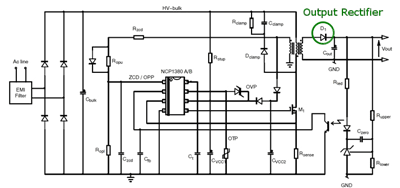
Fig. 2. NCP1380EVB Circuit (D1 is the output rectifier).

Table 1. NCP1380EVB measured efficiency and standby power.
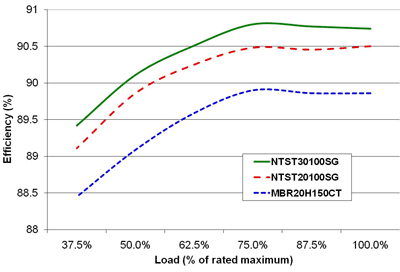
Fig. 3. NCP1380EVB (60 W, 20 V) low line efficiency.
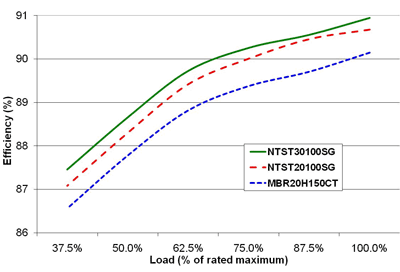
Fig. 4. NCP1380EVB (60 W, 20 V) high line efficiency.
Additional benefits of LVFR rectifiers
LVFR rectifiers offer several performance improvements over previous generation rectifiers, in addition to the lower forward voltage. Compared to traditional planar Schottky devices, the trench based Schottky rectifiers can withstand much higher avalanche currents without damage. The NTST30100SG can withstand 300-mJ avalanche energy in a 10-mH UIS (unclamped inductive switching) test. In addition, the leakage current is less temperature dependent than a typical Schottky rectifier, increasing the stability of the device (the NTST30100SG is rated to operate at temperatures up to and including 150C). Finally, unlike some of the new MOSFET based rectifiers in the industry, the majority carrier Schottky functionality incorporated into the trench structure maintains the fast switching times enjoyed by traditional Schottky rectifiers. The typical reverse recovery switching time of the NTST30100SG is only 23 ns, slightly faster than the 25-ns trr of a traditional 30-A, 100-V planar Schottky (see Fig. 5 ), allowing high-frequency operation without prohibitive switching losses.
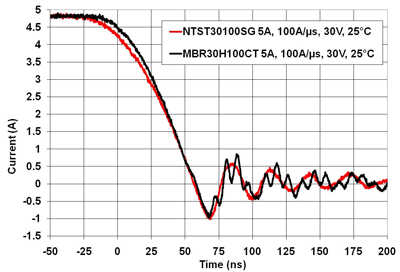
Fig. 5. Switching waveforms of NTST30100SG and MBR30H100CT (typical performance, measured at 25C)
LVFR rectifiers in other applications
The initial devices in this product family are specifically tuned to provide optimum performance as output rectifiers in ac/dc converters. The primary advantage in those applications is the reduced forward voltage. However, the advanced trench based technology offers a fundamentally better performance tradeoff than traditional Schottky or competitive MOSFET based rectifiers, and it has secondary benefits of better temperature stability and higher avalanche survivability. These advantages could be applied to many low voltage applications. The upcoming new products in this device family include TO-220FP devices in different voltage and current ratings, ideally suited for use in LCD TV power modules.
The NTST30100SG (30A, 100V, single anode device, packaged in lead free TO-220) is available for order now. A portfolio of other parts, including the NTST20100SG; dual anode devices; parts packaged in TO-220FP, I2PAK, D2PAK; additional current ratings; and voltages ratings up to 200 V are all in development. ■
Advertisement
Learn more about ON Semiconductor





